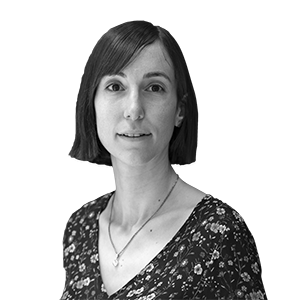World Press Photo: the invisible stories of the pandemic
The exhibition comes to the CCCB with the most powerful images of 2020 on global protests, humanitarian crises and the impact of climate change


BarcelonaUntil 2020, Dutch photojournalist Jasper Doest was used to spending little time at home. His work had taken him to portray Caribbean flamingos, Japanese macaques domesticated by tourism, the migratory passage of storks through the Iberian Peninsula and polar bears in the Arctic. But last year the pandemic broke out and Doest, like the vast majority of the world's population, was forced to stay in his family home in the Dutch town of Vlaardingen. Specialising in photographing wildlife, Doest had parked his camera until a pair of pigeons appeared on the balcony of the flat where he lives with his wife and daughter. "They visited us every day to remind us that we humans are not alone on this planet", says the photographer, who immortalided them in a series of images in which the animals star in the most surreal situations: on a record player, with their heads inside a wastepaper basket and inside a pan (with the fire turned off).
Doest's series, named Pandemic pigeons, won the World Press Photo first prize in the nature category and is part of the exhibition World Press Photo 2021, which can be seen from Thursday until 12 December at the Centre de Cultura Contemporània de Barcelona (CCCB). Doest's images serve to explain the situation that many photojournalists experienced last year. "The local perspective became much more present because they could not fly to other countries. Many photographers focused on personal stories and on what was happening close to home. This makes this edition of World Press Photo special, more realistic with the present moment", says Sanne Schim van der Loeff, chief curator of the World Press Photo Foundation.
The pandemic has inevitably marked this edition of the World Press Photo, which chose as best photo of the year the image by Danish photographer Mads Nissen showing an embrace between a Brazilian grandmother and a nurse surrounded by plastic. "The exhibition is tinged with covid-19 because it has affected all areas. The photographers have approached their communities and show us stories of overcoming and survival from the private sphere", says Sílvia Omedes, director of the Photographic Social Vision foundation, which is in charge of organising the exhibition. The snapshots related to the coronavirus are in the current affairs category, where photographers such as the Indonesian Joshua Irwandi, the Swiss Roland Schmid and the French Laurence Geai have immortalised the pressure on health workers, the loneliness of hospitalised covid-19 patients and the situations caused by health restrictions, with friends meeting on the sly and leaving a metre and a half of distance between them.
Smuggled semen in Palestine
However, the realities experienced in 2020 go far beyond the pandemic, and that is why the World Press Photo collects images that denounce climate change, reflect social movements and global protests such as Black Lives Matter and show wars and humanitarian crises; for example, the one in Yemen, which the Argentine photographer Pablo Tosco explains through the image of Fatima, a fisherwoman from Khor Omeira who took over the business when her husband left for the war. "For more than seven years Yemen has suffered an armed conflict perpetuated and sustained by men. Women are its main victims; about 30% of marriages are forced and with minors. We are looking for testimonies to highlight the multiple oppressions they suffer", says Tosco.
One of the most powerful stories in the exhibition is that of the series Habibi by the Italian Antonio Faccilongo, which won the first prize for photo reportage of the year. Faccilongo followed a group of Palestinian women whose husbands are imprisoned in Israel. Private conjugal visits are forbidden and they must always see each other separated by a plastic partition. Only children under the age of 10 are allowed to have physical contact with their parents in 10-minute meetings. Through these visits, Palestinian women have managed to smuggle semen from their husbands hidden in pens, sweets or chocolate bar wrappers. In this way, the women have been able to continue raising a family despite their husbands being sentenced to 20-year prison terms. "It's not a tragedy, it's a story of perseverance and survival, and that's how Faccilongo has portrayed it", says Schim van der Loeff.
Against all odds, this year's World Press Photo Contest has received more candidates than previous editions. 4,315 photographers from 130 different countries submitted more than 74,000 photos. "Last year there was a sharp drop in the number of assignments and many photojournalists became freelancers", says Omedes. The director of the CCCB, Judit Carrera, stresses that this year's exhibition "highlights the value of their work and combats precariousness" at a time "when it is very important to teach how to observe critically, because the link between fake news and the real facts is close". The exhibition can be visited in person and also in virtual guided tours through Filmin.
